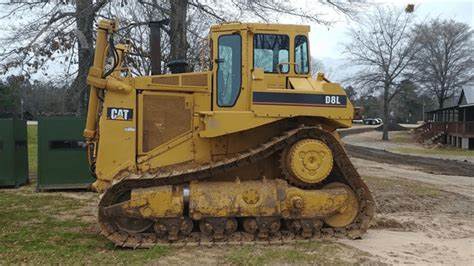The word “dozer” goes back to the 19th century when it was denoted as an operating mechanism attached to the front of track-type tractors. It was used to spread loose dirt out overfill. With time it has gone through an evolution and is used across the globe to perform tougher construction jobs.
Types of dozers and blades used in modern Indian construction
With the heavy investment, India plans to spend up to 111 trillion rupees over the next four years on infrastructure projects. This has further led to the widespread adoption of bulldozers for roads, railways and airports. Bulldozer manufacturers are now focused on technological advancement that will support the machine’s compact variants and features that will perform better on uneven terrains. Now, built-in intelligence is also available so you can work flawlessly with leading GPS grade control systems. They also come in multiple variants to meet power or handling requirements. There are different types of dozers used across the road, mining, railway and other works in India.
Different types of dozers
Crawler Dozers
The crawler is a tracked dozer that appears much like a tractor. This heavyweight machine is used to hold materials from one place to another. Modern crawler dozers are equipped with a Hydrostatic Transmission System that allows for variable speed selection or intermediate speed selection. The mainframe is designed with advanced Computer-Aided Engineering (CAE) technology that consists of a track frame combined with connecting bars. The modern models come with dual-path closed-circuits with two variable displacement piston pumps and two 3-speed variable displacement travel motors.
Travel motors and final drives are mounted inside the track shoe for protection from rocks and stumps and for improving durability. The life of undercarriage and reliability are greatly extended by the use of large-size links, pins, bushings, and unique dust seals. A2183119,SVL75 use dynamic brakes to ensure safe operation. The 3-axis PPC valve and ergonomically designed joystick provide light operating effort and excellent blade response. It also features a PCCS (Palm Command Control System) joystick that controls all directional movements. The engine hood and well-located operator seat provide excellent visibility to the blade. This clear blade visibility greatly increases grading efficiency and reduces operator guesswork. The models are designed to maximize the blade curvature. The large blade radius allows the rolling-up performance of the material to be maximized by utilizing the entire blade. This provides excellent productivity while maintaining the grading capabilities.
Mini dozers
A mini dozer is often known as a compact dozer used for tasks that require extra mobility and flexibility than additional massive equipment. The modern mini dozers feature technology enhancements and a new low-emission, fuel-efficient engine. It comes with a new lower sloping hood line that improves visibility to the peripheral view and the blade’s cutting edge to increase finish grade efficiency.
The models can deliver a blade capacity of 1.85 to 1.98 cubic metres, 92 hp and an operating weight of 8,319 to 8,627 kg. Eco mode in these machines automatically allows the engine to deliver maximum speed and power until the load decreases. The new model also features a 25-cm primary display with colour touchscreen and provides access to many of the standard and optional advanced technology features. The slope Assist feature in mini dozers improves operator efficiency when working on slopes by providing the chassis in the cross-slope direction. This also complements operator blade control input, allowing the operator to finish grade easier, quicker and with less effort.
Different types of Dozer Blades
The above dozer types can be further classified based on the blades used. Different blades serve different purposes, can handle different types of materials and can handle a range of load weights.
- Straight Blades (S-Blade) – It is the smallest blade dozer and does not have surface wings, this blade is assigned to the lower rear corners of the module. This blade attaches to the arm in the lower back corners of the blade.
- Universal Blade (U-Blade) – This blade has long edges and a curved shape that makes it ideal for transferring material to more extended parts. It is ideal for pushing materials across long stretches of land. It’s the largest blade type in both height and width and is best used with soft- to medium-density soil.
- S-U (SEMI-U) Blade – This type of blade combines the S-blade & U-blade and provides sufficient penetration. It is ideal for pushing soil across long distances.
- Angle Blade – This type of blade is attached to the center of the bulldozer’s panel. It is for moving debris to the side since it can angle close to 30 degrees left or right.
- Power-Angle-Tilt (PAT) Blade – This blade can be controlled from the cabin & it can tilt at any angle in almost all directions. It is used for scraping, land clearing, leveling, backfilling and grading.




